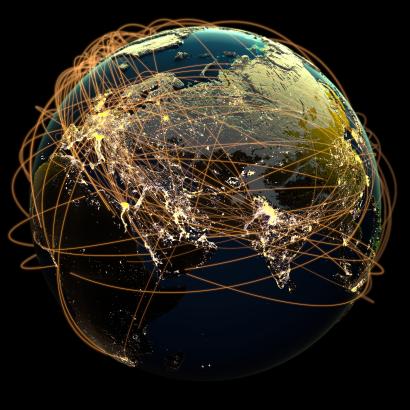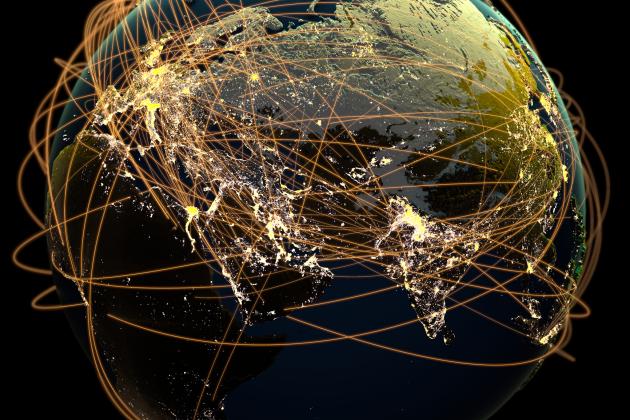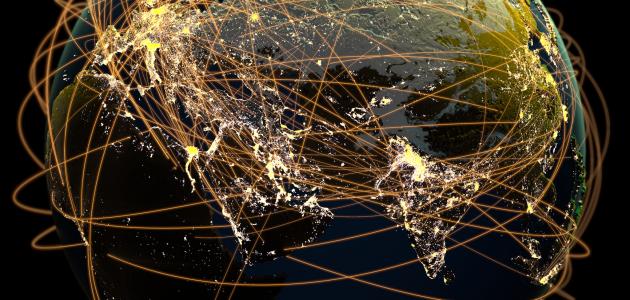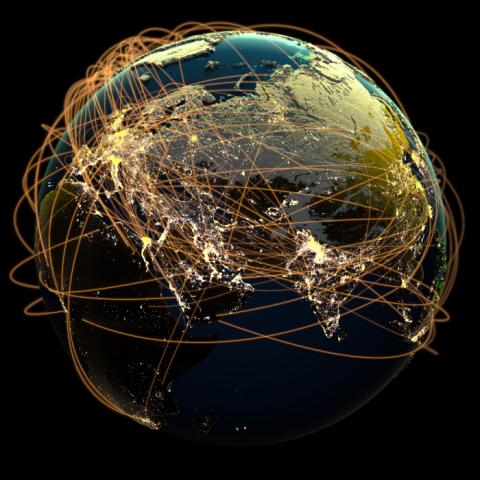An Era of Pessimism
I have been tasked to write on governance in the contemporary era, a time when many knowledgeable commentators believe that democracies across the western world are performing poorly in the face of new challenges arising from demographic and technological change. Commentary on the state of contemporary liberal democracy clearly tends toward the pessimistic:
The vague and persistent feeling that democracies have become ungovernable has been growing steadily in western Europe. The case of Britain has become the most dramatic example of this malaise…1
Western Europe has only 20 or 30 more years of democracy left in it; after that it will slide engineless and rudderless, under the surrounding sea of dictatorship…2
Given the relative decline in its military, economic and political influence, the United States is more likely to face serious military or diplomatic reversal during the coming years than at any previous time in its history. If this does occur, it could pose a traumatic shock to American democracy.3
Why do some commentators sound such discouraging notes?
The image which recurs in these and other statements is one of the disintegration of civil order, the breakdown of social discipline, the debility of leaders, and the alienation of citizens.4
Fake news! The preceding statements are not contemporary. They are contained in a report to the Trilateral Commission, entitled The Crisis of Democracy. That report was published in 1975.
So, others before us have expressed the kinds of concerns that bring us here today—not only in the 1970s but in earlier periods as well.5 Yet, thankfully, democracy has somehow survived for us to express similar concerns once again. In making this observation I do not mean to discount the severity of our current problems. Because democracy has survived earlier periods of crisis obviously does not guarantee that it will survive this one. Perhaps the great transformations of technological change, globalization, and climate change confront today’s democracies with challenges that are simply unprecedented in world history.6 On the other hand in the economic realm, economists quip that the four most dangerous words in investing are “this time it’s different,” warning that an emphasis on the particularities of a current development may cause us to overlook the commonalities it shares with previous ones.7
So, while mindful of the possible uniqueness of today’s challenges, this paper asks whether we can we draw any lessons from an earlier—but modern—episode when highly reputable observers thought that western democracy was in crisis?
Revisiting the “Democratic Distemper” of the 1970s8
In an exercise like this the first question is: Are the democratic discontents analogous? In one of the quotations reproduced above the authors of the Trilateral Commission report identified four concerns:
The Disintegration of Civil Order
The Breakdown of Social Discipline
The Debility of Leaders
The Alienation of Citizens
Disintegration of social order and breakdown of social discipline? Yes, troubling examples are all too common today, but certainly not as much now as then. We have the yellow vests in France (and Belgium and a few other countries to a much lesser extent), and in the United States there has been some violence associated with demonstrations, and news programs report instances of heightened incivility—splinter groups disrupting government forums, accosting political figures in restaurants, and mobbing unfortunate souls who utter or post an insensitive comment. But those who fear that the United States is close to civil war either have forgotten or are too young to have experienced the “sixties” (an imprecisely named long decade beginning with the assassination of John Kennedy in 1963 and ending with the resignation of Richard Nixon in 1974). Recent years have seen nothing like the urban riots and the anti-war demonstrations of the 1960s or the violence at the 1968 Democratic National Convention in Chicago. And even the considerable damage associated with the yellow vests does not approach that of the 1968 riots in France (Emmanuel Macron has not felt it necessary to flee to Germany as De Gaulle did), let alone the terrorism of the Red Brigades in Italy during the Years of Lead.
Debility of leaders? Here the similarities seem comparable, possibly even worse today. Macron took less than two years to fall from the heights of popular approval to ratings lower than those of Donald Trump.9
(At one point his predecessor, Francois Hollande, managed to earn an approval rating of 4 percent, well below the 10 percent approval of the U.S. Congress, which usually determines the floor under political approval ratings). In Italy Matteo Renzi’s fall nearly matched Macron’s—from 70 percent approval to 36 percent in less than two years.10
The trials and tribulations of Theresa May as she struggles with Brexit perhaps do raise questions about the governability of Britain noted above. Then there is the less spectacular decline of Angela Merkel and in the United States the stalemate on daily display in Washington.
When it comes to the alienation of citizens, the contemporary situation probably even exceeds that of the 1960s and 70s. Few trends have been as extensively documented as this one. Figure 1 displays the long-term decline of trust in government for the United States. Similar downward trends are evident in other western democracies, although most data series begin later and fail to capture the major post-1960s decline.11 (Importantly, however, note the two decades of partial recovery in the United States after the 1960s-70s plunge, a feature of some relevance later in this paper.) In the early decades of the 21st century, electorates around the western world have lost faith in their governing classes (as well as other institutions to be noted below) [see Figure 1].
In sum, while contemporary civil society has not been as violently disrupted as it was a half century ago there seem to be enough similarities between the current problems of democracy and the problems of democracy two generations ago to ask whether we can learn anything from a comparison of the two periods. My strategy in this paper is to examine what scholars of that day thought were the underlying causes of what they saw as “the crisis of democracy” and consider whether any similar causes underlie our present discontent. I believe that to a significant extent they do.
After presenting that argument, I will then turn to how the earlier crisis passed—how western Europe did not “slide” into dictatorship by the turn of the century and how the United States escaped “a traumatic shock.” For the critical point is that the western democracies transcended the problems of the 60s. By the 1990s, few observers were worrying about the crisis of democracy. In what Pietro Nivola called “the era of petty politics,” the 1996 U.S. presidential campaign saw debates about issues such as V-chips and school uniforms, and an important issue in the 2000 campaign was what to do with the huge federal budget surplus.12
Before proceeding, I call attention to the cross-national character of our current governance problems. I am a specialist in American government and politics, so my discussion naturally focuses mostly on the United States. But as in the earlier era, the developments that bring us together are certainly not uniquely American. Explanations of our current problems and suggestions for transcending them should apply to democracies in general—no American exceptionalism here. In particular, the cross-national nature of the democratic distemper immediately calls into question many of the standard institutional explanations political scientists and political reformers emphasize.
To wit, democratic governance is under pressure in two-party systems like the United States and the United Kingdom and multi-party systems like those of continental Europe. Indeed, one of the most striking developments in recent years has been the fracturing of long-established party systems, especially those of France and Italy, where major parties disappeared in a single electoral cycle. At the time of this writing the British parties have suffered defections under the pressures of Brexit, and in the United States plutocrats contemplate launching independent candidacies for president. Similarly--and closely related to different party systems--different electoral systems seem equally susceptible to democratic dysfunction. Proportional representation systems that give voters a wider range of choices seem to fare little better than single member systems that presume two sizes fit all. Electoral institutions do not seem to be critical.
The picture looks the same across governmental institutions. Presidential and parliamentary systems alike are experiencing similar difficulties. So are countries with strong legislatures like the United States and those with (heretofore) rubber stamp legislatures like Great Britain. The same goes for countries like the United States with permeable politicized bureaucracies and those like Britain (and the EU) with more insulated professional bureaucracies. The same goes for systems with strong and weak courts. Problems seem to afflict democracies across the board, not differentiating among the numerous institutional variants often considered important. Such differences may affect the form negative developments take and the rate at which they occur but are unlikely to be fundamental causes.
Finally, today’s conditions suggest that everyone’s favorite culprit—party polarization—is doubtful as a fundamental cause of democratic discontent. In the United States the parties unquestionably have polarized significantly over the course of the past generation (e.g. Figure 2), but in western Europe the political science literature reports that the general trend has seen the traditional parties de-polarize. [Figures 3 and 4 for example.] If polarization contributes to present difficulties, it must do so in a more complex way than often argued.
What Caused the Democratic Distemper?
Without using the exact term, the authors of the Trilateral Commission Report agree that the fundamental cause of the 1970s crisis of democracy was government failure to deliver what ordinary citizens most value—social order, economic prosperity, and international peace. In the United States the early ‘60s saw the Civil Rights Movement, which by the latter part of the decade morphed into violent and destructive urban riots.13 Coincident with those disorders were large-scale anti-Vietnam war demonstrations. The ‘70s saw an unsatisfactory end to the war and the arrival of a “stagflation” that marked the end of the great post-World War II economic expansion. Trust in government plummeted and citizen alienation surged.
A half century later there can be little doubt that government failure figures heavily into the democratic dissatisfaction of today. In the United States seventeen years of war in the Middle East following the 9/11 terrorist attacks and two major recessions, the second of which in 2008 was the largest since the Great Depression, have shaken citizens’ faith in the capacity (and possibly the motives) of the political class. The recession hit the European democracies as well, of course, resulting in a debt crisis and for a time threatening the viability of the European Union. More recently, failure to deal with problems associated with immigration has disrupted previous party equilibria.
Although they did not label it a fundamental cause, the authors of the Trilateral report emphasized developments on the social front that conditioned the operation of government. As they wrote, “The viability of democracy in a country clearly is related to the social structure and social trends in that country” (emphasis in original).14 Beginning in the early 20th century and accelerating sharply after World War II, African Americans moved from the south to the north in the largest internal migration in American history, increasing the racial diversity of northern cities.15 In the ‘60s the previously subjugated Black population in the South was enfranchised. These social trends disrupted the Democratic Party, pushing the northern wing in a more racially liberal direction that increased tension with the southern wing. At the same time, northern migrants swelled the population of the Sunbelt. Together these trends incentivized the Republicans to appeal to an increasingly vote-rich conservative white south.16 A completely independent development was the arrival on newly expanded college campuses of a huge generation of young people—the baby boomers. Coupled with and exacerbating the previously described government failure the increase in geographical and demographic diversity disrupted existing electoral coalitions and ultimately led to a transformation of both parties.
At the same time a major technological change occurred: in a very short time television became ubiquitous—television penetration grew exponentially between 1950 and 1960.17 In 1955 Americans viewed the first televised presidential press conference, and a year later the Eisenhower campaign was the first to use television advertising in a major way, ushering in an era of “candidate-centered politics” (as contrasted with traditional “party-centered politics”). By 1960 most of the country turned on one of the three broadcast network news programs every evening, and the Kennedy-Nixon debates that year marked the ascendancy of the modern television-dominant era. Later in the decade footage of Vietnam war battles and casualties reached American households within 24 hours—Vietnam has been called the “first TV War.18
Images of urban rioting arrived even more quickly.
Note the parallel: the crisis of democracy in the 1970s in part reflected the increased difficulties of governing a changing population in an era of technological change—a central theme of this project.
Consequences: The Dysfunctions of Democracy
According to the Trilateral Commission report, government failure and social and technological change produced four changes that undermined liberal democracy:
The Delegitimation of Authority
The Overloading of Government
The Disaggregation of Interests
Parochialism in International Affairs
Today’s expressed concerns about the state of democracy arguably identify the same complaints.
The Delegitimation of Authority. One of the obvious explanations for the debility of leadership noted earlier is its delegitimation—increasingly citizens do not trust their leaders to act in the general interest. Citizens believe leaders are more prone to favor some interests (e.g. corporations, regions, races, and ethnicities) over others or to substitute their own self-interested motives for those of the general public. I emphasize that this point does not apply just to government and political leaders as depicted in Figure 1; rather, authority in general is held in low regard in today’s world. Figure 5 contains confidence figures for a plethora of American institutions and organizations. These figures are the end points (at least so far) of long-term downward trends. Confidence in business, labor, religion, law enforcement, education, the media—virtually everything—has been declining since the 1960s. The sole exception to these negative trends is confidence in the military, which has risen steadily after its post-Vietnam low point (Figure 6).
These trends undoubtedly contribute to the notable populist turn in recent elections. The populist impulse exists in most electorates, but generally remains dormant for long periods. The latest major eruption in the United States came in the 1960s when George Wallace attacked “pin-head social theorists,” “pointy-headed intellectuals,” and “sissy-britches welfare people.”19 Wallace garnered nearly 14 percent of the popular vote in the 1968 election. Such sentiments receded in the 1980s and 1990s but have resurged among those who vote for Donald Trump, as well as for Brexit and the various populist or “far right” parties across the western democracies [Figure 7].20
While writing in a period of relative calm, Christopher Lasch identified underlying concerns that would re-emerge with a vengeance fifteen years later:
In Europe referenda on unification have revealed a deep and widening gap between the political classes and the more humble members of society…A Europe governed from Brussels, in their view, will be less and less amenable to popular control…Such fears underlie the reassertion of ethnic particularism in Europe…The revival of tribalism, in turn, reinforces a reactive cosmopolitanism among elites.”21
The Great Recession delegitimated the expertise of economic elites and problems associated with immigration delegitimated the expertise of social policy elites. Not surprisingly, electorates began to reject the views of economists on matters like Brexit and free trade, and increasingly threw their support to populist parties who seem to be the only parties willing to address the problems associated with immigration. Additionally, in the United States seventeen years of war in the Middle East delegitimated the expertise of foreign policy elites among a significant swath of the population.22
And Trump owes his success in some part to popular resentment of so-called cultural elites.
Some commentators contend that not only do citizens now discount expertise, but consider the supposed holders of expertise as a negative reference group:
Trump ran against the elites and won…He defined the election as a people’s uprising against all the institutions that had let them down and sneered at them—the politicians and the parties, the Washington establishment, the news media, Hollywood, academia, all of the affluent, highly educated sectors of society that had done well during the time when middle-class families were losing their bearings.23
To the extent that this is true, citizens not only fail to heed the arguments of experts and leaders, they actually react against them.
Government Overload. According to the Trilateral Commission report “The demands on democratic government grow, while the capacity of democratic government stagnates.”24 A principal explanation offered for this trend was the proliferation of interests. Jeffrey Berry wrote about “the advocacy explosion that occurred in the United States during the 1960s and 1970s.”25 Older broad-based business, labor, and agricultural interests were joined by new groups focused on emergent issues that accompanied the Civil Rights and Women’s Rights revolutions (Figure 8). Older single-issue groups like the National Rifle Association were joined by myriad newer ones advancing specific claims as the notion that “the personal is the political” greatly expanded the political agenda.
Obviously these trends have continued apace. Interests that were unimaginable two decades ago now are represented by numerous groups. For example, Wikipedia lists 20 transgender rights organizations in the United States, which no doubt is an underestimate.26
Technological advances, particularly social media, have undoubtedly contributed to the continuing progress of the advocacy explosion. Before the internet interests that affected only a small number of people were difficult to identify, let alone coordinate and organize across physical space. Social media have made the task both easy and virtually costless. Whether cause or consequence—likely both—a change in the nature of party competition reinforces this explosion of political demands. At least in majoritarian systems competition traditionally involved the construction of broad-based coalitions (workers of the world unite!). Today, electoral competition often seems to involve cobbling together a collection of interest groups under a party banner. The growth of identity politics on the political left is the most commonly cited example.27 Rather than emphasize their commonalities, a variety of groups often contend over who is the most victimized or oppressed, and the most deserving of priority consideration.
Governments today are expected not only to provide peace and prosperity, but to attain social justice, to write all wrongs. And there seems to be no end to the discovery of new wrongs.
The Disaggregation of Interests. No doubt reflecting observations akin to those expressed in the Trilateral Commission report, I wrote in a 1980 article “Through a complex mixture of accident and intention we have constructed for ourselves a system that articulates interests superbly but aggregates them poorly.”28 If that observation was apt then, it is certainly even more appropriate now. In contemporary democracies there are far more numerous and cheaper ways to articulate interests than in the 1970s, but the means of aggregating them seem even more elusive.
The political party, of course, is the primary vehicle for aggregating interests. Historically, parties identified positions common to the interests of their component groups and constructed ideologies that rationalized their programs. The 1960s and 70s were a period of party decomposition and party de-alignment.29 The picture is more complicated today. On the one hand, there are notable examples of party system collapse in Western Europe. As noted above, France and Italy are the most striking examples. I tell my American students that it is as if the Democrats and Republicans were both replaced by other parties between 2012 and 2016.
On the other hand, there appears to be a developing consensus that American parties are stronger than ever. Party cohesion in Congress is at a historical high and the association between partisanship and voting is as strong as it has been since the advent of modern scientific polling. Still, in elections since 2000 only 60 percent of Americans say they are Democrats or Republicans, compared to three quarters in the Eisenhower era. Moreover, partisans not only rate the opposite party more negatively than in the past, they have begun to rate their own party more negatively, leading some to argue that partisanship today is based as much or more on hostility toward the other party than on affection felt for one’s own.30
Whatever the case may be, the fact is that parties in the United States today are different from those of most of American history. Party activists are motivated much less by material interests—jobs and contracts, and much more by issue and ideological commitments.31 They have become amalgams of policy demanders in the terminology of one influential account.32 Although not as pronounced, trends in the same direction are apparent in other democracies. In Britain Labour has empowered grass roots activists, to the dismay of some unions, and Five Star in Italy operates in a manner that is a striking departure from the operations of traditional Italian parties.
Even if today’s parties are as strong as those of the mid-20th century, the explosion of interests would make the job of interest aggregation more difficult. If parties are not as strong as in earlier decades, the difficulty is compounded.
Parochialism in International Affairs. Donald Trump’s America First is exhibit A here, but it is certainly not the only one. Brexit, National Rally, Lega Nord, Five Star, Podemos, and especially some parties in the newer eastern European democracies all represent at least in part attempts to assert national interests against supranational agreements, regulations, and responsibilities. Again, such nationalist reactions do not come out of nowhere; government failure is deeply implicated. Costly wars with no obvious national gains, uncontrolled immigration, domestic terrorism, growing economic inequality—all contribute to popular desires to emphasize “us” and deemphasize “them.” I will say no more here, since earlier papers have covered this subject.
Consequences: Summary. All in all, the preceding brief survey indicates that the consequences of today’s democratic distemper are similar to those identified in the 1960s, and reflect similar causes as explained in an earlier section of this paper. But somehow the trends that concerned an earlier generation of scholars ceased to operate or were overcome by other counter-vailing trends, so that by the 1990s the crisis of democracy was all but forgotten and observers could complain that Americans politics revolved around “petty” issues.
What Cured the 1970s Crisis of Democracy?
The Trilateral Commission published its report in 1975. Perhaps illustrating the old saying that “the darkest night is just before the dawn,” conditions only got worse in the remaining years of the decade. Great Britain replaced the Ottoman Empire as “the sick man of Europe.” In 1978-79 Britain experienced the “winter of discontent” as the unions struck against the Labour Government’s attempts to control inflation. Meanwhile, the United States suffered through the Iranian hostage crisis, the second oil shock, continued stagflation, and withdrawal from the 1980 Olympics in protest against the Soviet invasion of Afghanistan—a period labelled an era of “malaise” in reference to the negative tone of one of President Jimmy Carter’s major speeches.
When Jim Timbie invited me to join this project, he stipulated one condition. “We do not want another paper on elections,” he said. “We want a paper on governance.” Well, I have tried my best to follow Jim’s mandate, but the answer to what ended the earlier crisis of democracy was, I believe: ELECTIONS!
The 1979 British election saw the largest vote swing since 1945 as Margaret Thatcher led the Conservative Party to the first of four general election victories that allowed the Conservatives to govern until 1997. Thatcher embarked on an aggressive policy of denationalization, deregulation, tax cuts, and interest rate increases to curb inflation and stimulate growth. The economy experienced several years of rough sledding, but Thatcher stayed the course and the economy began to recover as her policies took effect. Meanwhile the Iron Lady successfully prosecuted the Falklands War in 1982 and crushed the coal strike in 1984.
In the United States President Carter enjoyed high personal ratings but suffered from low performance ratings. In 1980, however, Ronald Reagan was not the beloved “great communicator” that he became after his presidency.33
The polls showed a very close election until the last week of the campaign, when undecided voters moved decisively toward Reagan, giving him a landslide victory, along with a 33 seat gain in the House of Representatives and a 12 seat gain in the Senate. The result was a working conservative majority in the House and control of a chamber of Congress (the Senate) for the first time since the 1952 elections. Like Thatcher, Reagan proposed an aggressive program of tax cuts and deregulation. Barely six months in office he fired 11,000 striking air traffic controllers. With a little help from Paul Volker, Reagan attacked inflation, and with a little help from a person in this room, Reagan set a firmer course in foreign affairs. Like Thatcher in Britain, there were some bumps in the road before the new policies took effect, and the Republicans lost 26 seats in the House in the 1982 mid-terms. But Reagan stayed the course and won an overwhelming reelection victory in 1984.34 The Reagan administration’s successes carried over to 1988 when Republican George H.W. Bush defeated Democrat Michael Dukakis, the only time since 1948 that one party has won the presidency in more than two consecutive elections.
I am less familiar with other cases, but perhaps it is worth mentioning that in France Francoise Mitterrand won the presidency in 1981 and served until 1995, the longest period in the history of the various French republics. Although he began his tenure by following a traditional socialist program, within two years he executed a “U-turn” toward monetary and fiscal restraint akin to the policies adopted in Britain and the United States.
I am not an advocate of the “great man” (or great woman) theory of history. Nor am I arguing that neo-liberal economic policies are always and everywhere appropriate. What I am suggesting is that the earlier crisis of democracy ended when a political party won a clear victory, party leaders acted decisively to meet the problems of the day, the government stayed the course when its policies did not have an immediate positive impact, and the electorate ultimately rendered a favorable verdict on the party’s performance. Had the policies not been appropriate for the time, governing parties would have lost the next election and the crisis would have continued. But happily in at least two important democracies, the polices worked, and the electorate rewarded the governing parties with continued tenure in office.
Two Variants of Democratic Theory
As a full-time student of democratic—albeit mostly American—politics for fifty years, I have come to believe that the kinds of democratic crises discussed in this paper occur when the pendulum swings too far in the direction of one type of democratic government.35 While using different terminology, many political philosophers have contrasted two variants of democratic theory. Here is my admittedly simplistic attempt to sketch these, which are not so distinct in most real cases, of course.
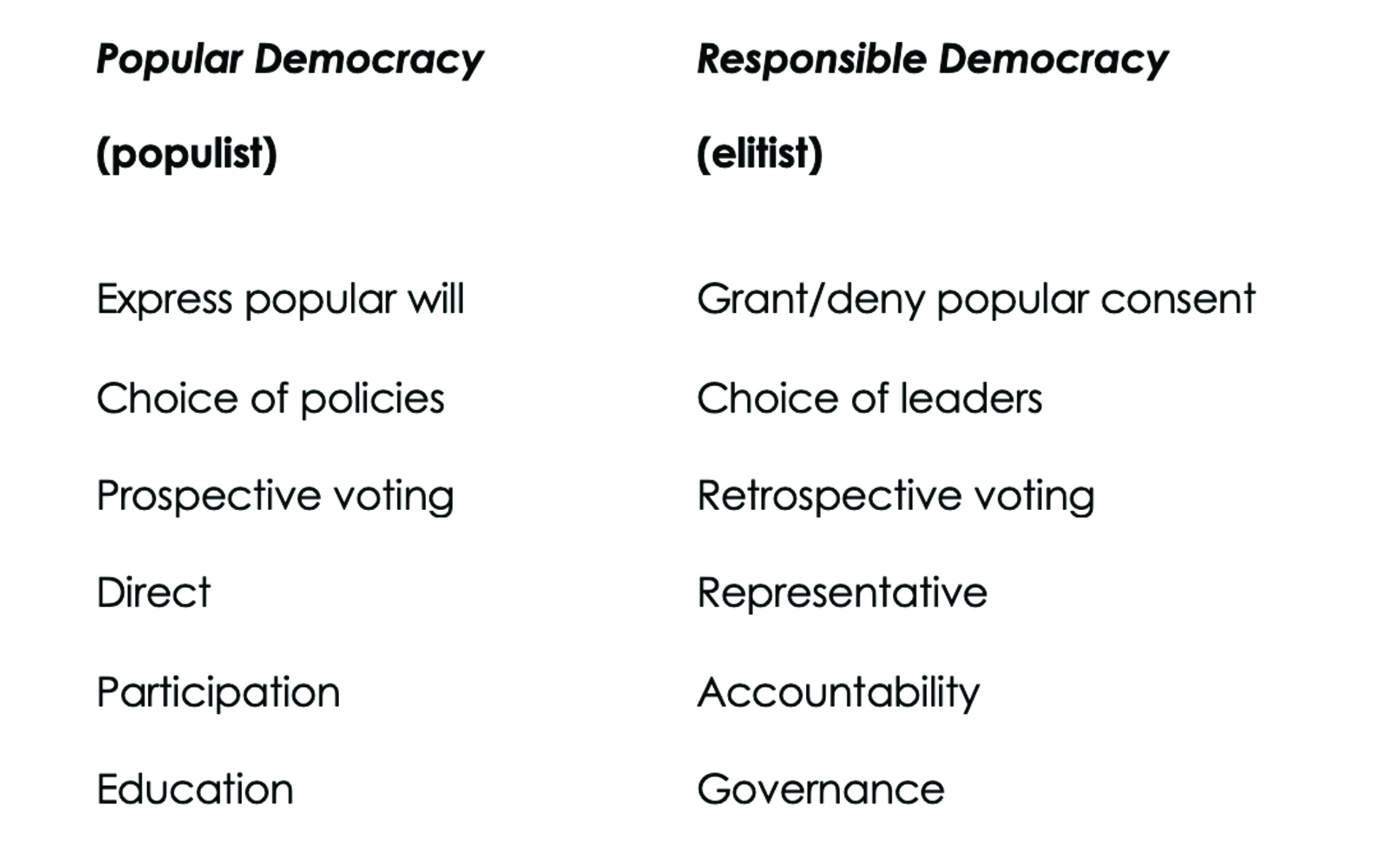
Popular democracy, sometimes called populist by those unsympathetic to it, contrasts with responsible democracy, sometimes called elitist by those unsympathetic to it. The former views elections as vehicles for expressing the will of the people, whereas proponents of responsible democracy contend that there is no such thing as the will of the people. Rather, elections provide opportunities for the people to consent to—or deny consent to—to the policies of an administration. For responsible democracy advocates, it follows that democracy is primarily about the choice of leaders; it is too much to expect voters to guide the choice of policies, as assumed in popular democracy. A good way to judge leaders is by their performance in office; hence voting takes on more of a retrospective character in responsible democracy. Past performance is easier to assess than judging the likelihood that campaign promises about future policies will have the desired impacts, or even whether such policies will be implemented in an institutionally complex democracy like the United States with its numerous veto points.
Popular democracy favors direct forms of democracy, where practical. Initiatives and referenda allow people to bypass policy-making institutions and party gatekeepers and allow citizens to decide directly. Using primaries and caucuses to choose candidates for office empowers the grass roots. Responsible democracy advocates favor representative forms of democracy, even where direct forms might be feasible, not trusting electorates to make complex policy decisions or to nominate the best candidates for office.
Above all else popular democracy emphasizes participation and political equality, the opportunity for every citizen to take an equal part in democratic decision-making. Through democratic participation citizens will become ever more enlightened. Responsible democracy advocates worry more about accountability. Do citizens know whom to credit or blame? And while an enlightened citizenry is all well and good, in this imperfect world, the test of a government is its ability to meet the challenges facing a population that contains people with different and often conflicting beliefs, interests, and values.
No doubt the preceding paragraphs betray my sympathies with the responsible form of democratic theory. To some extent, as in the 1970s, today’s crisis of democracy reflects too much democracy.36 The policy processes have been stripped of any insulation they once had.37 Every voice, no matter how few express it or how extreme the expression, has the opportunity to make itself heard. And because politics is so open to popular participation, today’s parties and politicos are hyper-responsive to the voices loosely associated with “their side.”
Thus, I offer no optimistic conclusions. Rather, until a modern-day Thatcher or Reagan arrives on the scene and constructs an enduring electoral majority, today’s problems of democratic governance are likely to continue.
Morris P. Fiorina is a senior fellow at the Hoover Institution and the Wendt Family Professor of Political Science at Stanford University. He has been elected to the National Academy of Sciences, the American Academy of Arts and Sciences, and the American Academy of Political and Social Sciences. The author of numerous books, he most recently published Unstable Majorities (Hoover, 2017).
Supporting Data
Figure 1. ANES Trust in Government Index

Figure 2. The Parties in the U.S. Congress Have Polarized Since the 1960s38
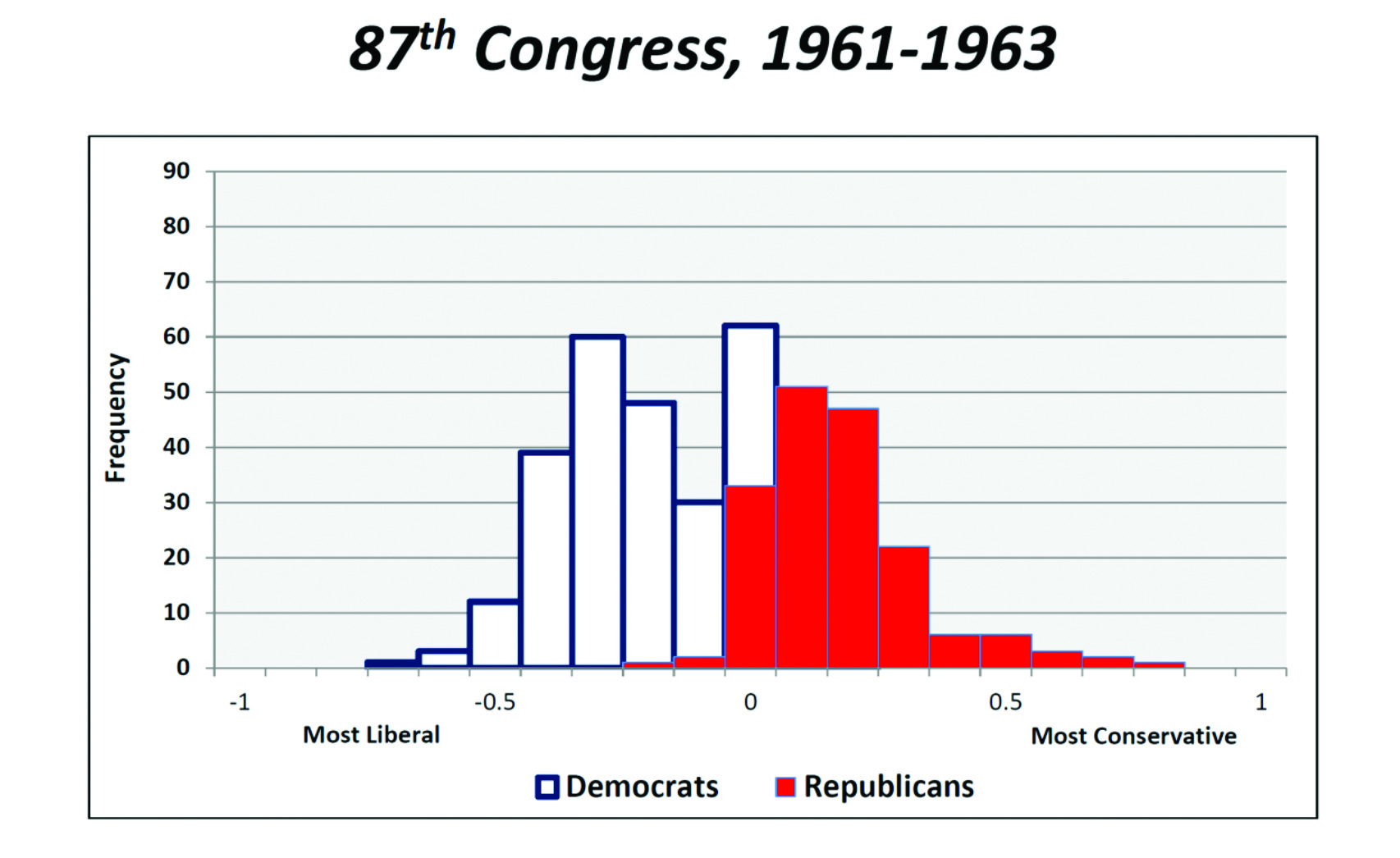
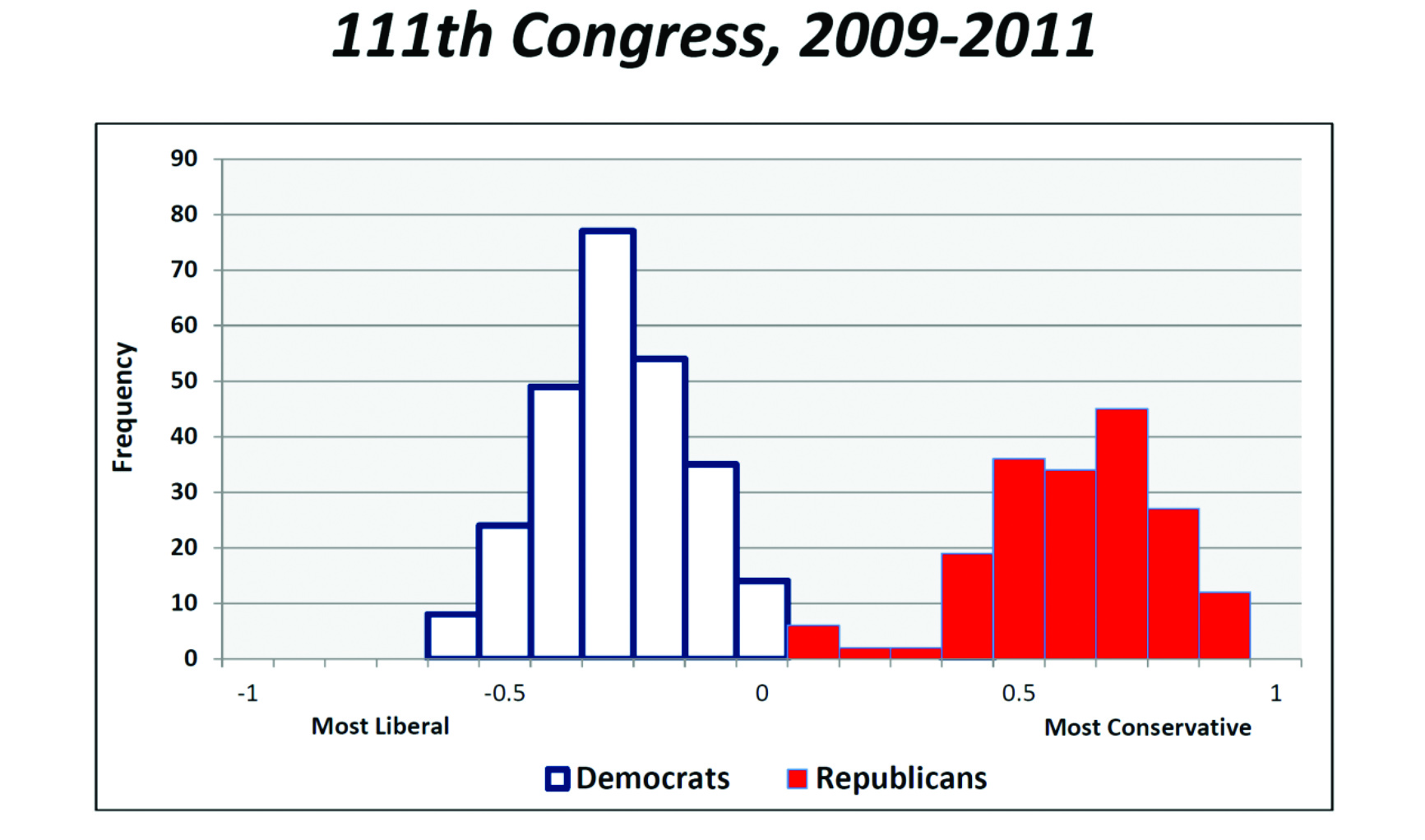
Figure 3. Partisan Differences in Great Britain Have Declined39
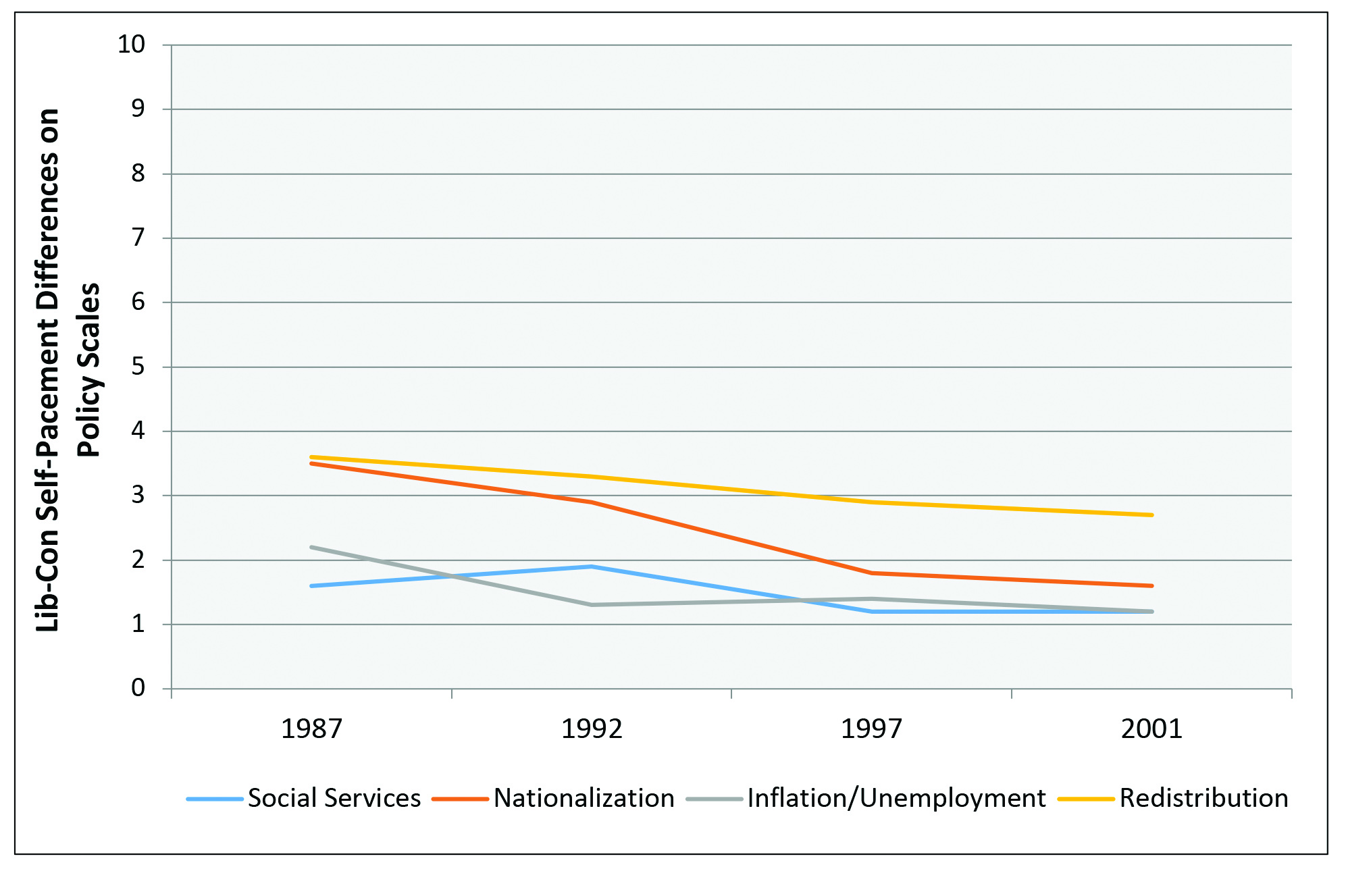
Figure 4. Partisan Differences in Holland Have Declined40
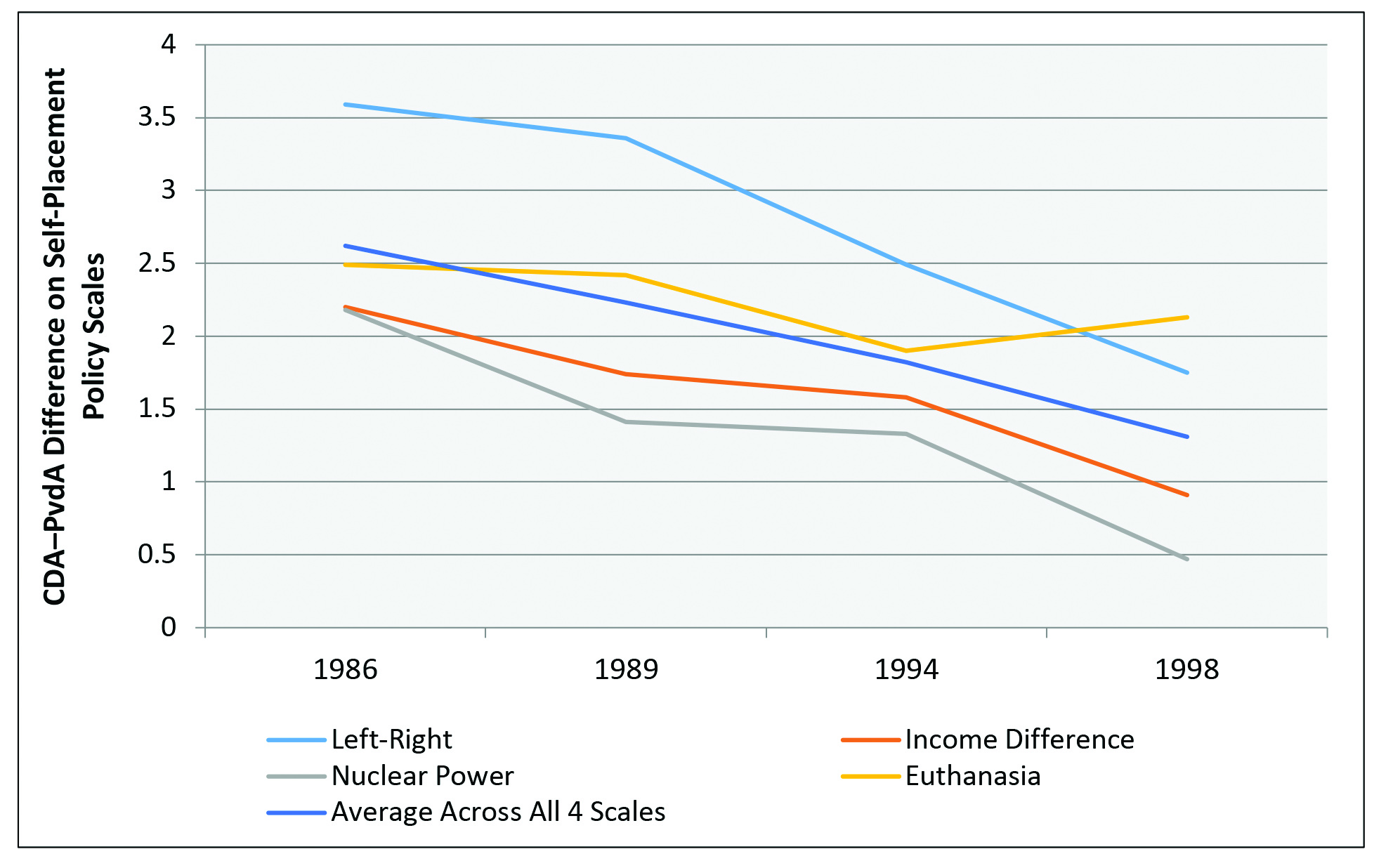
Figure 5. Low Trust in U.S. Institutions
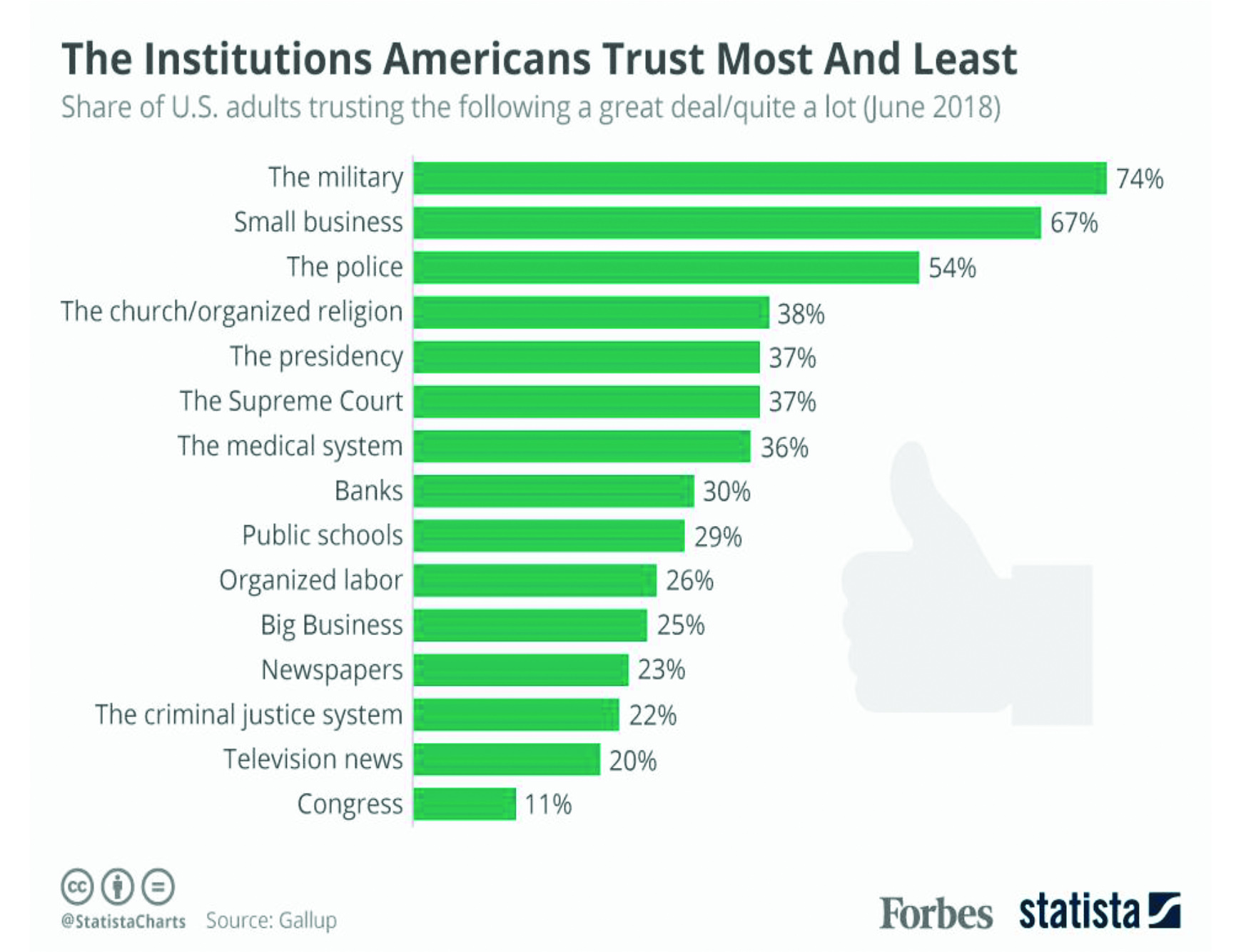
Figure 6. Not Just Political Elites
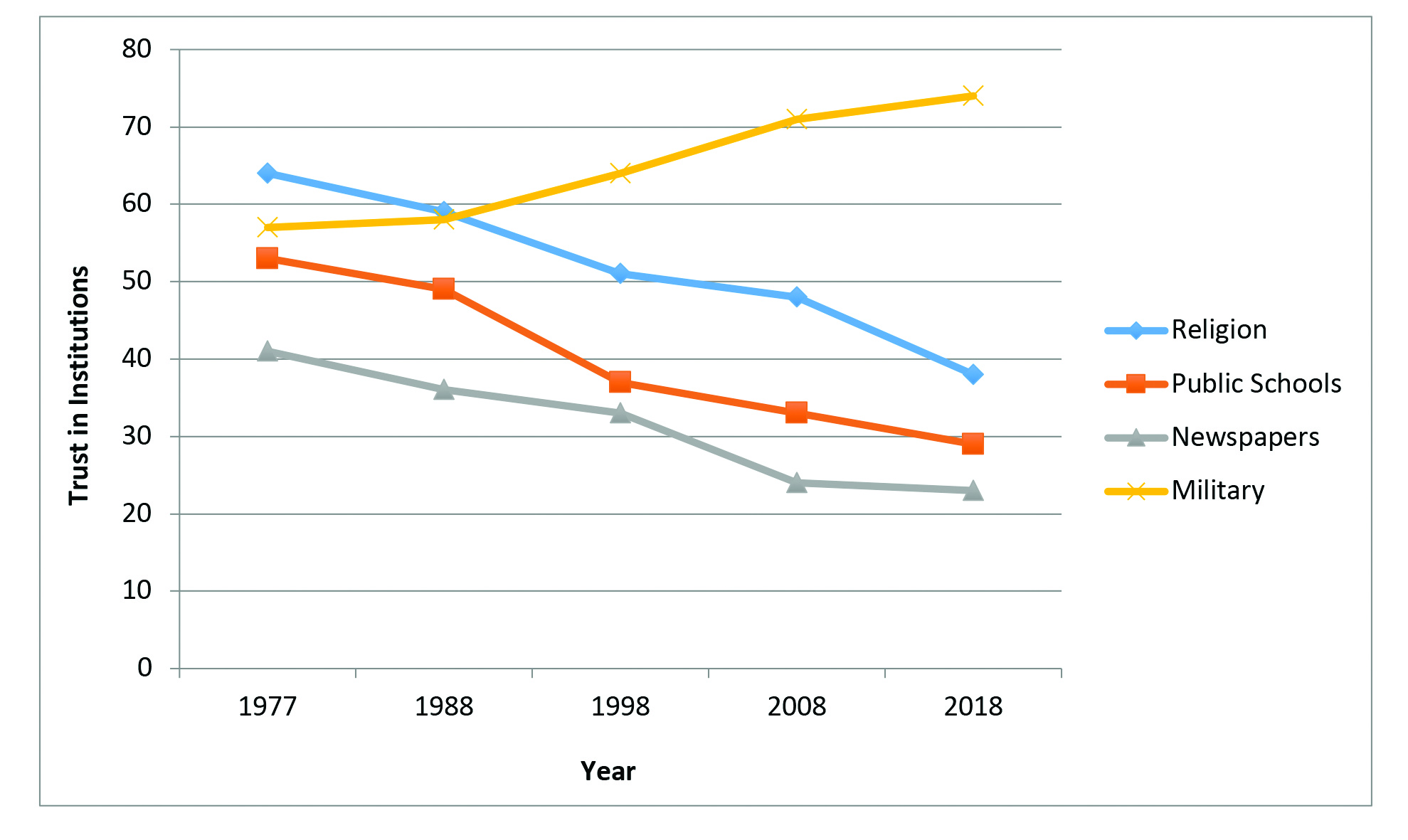
Figure 7. Support for Populist Parties in Western European Democracies41
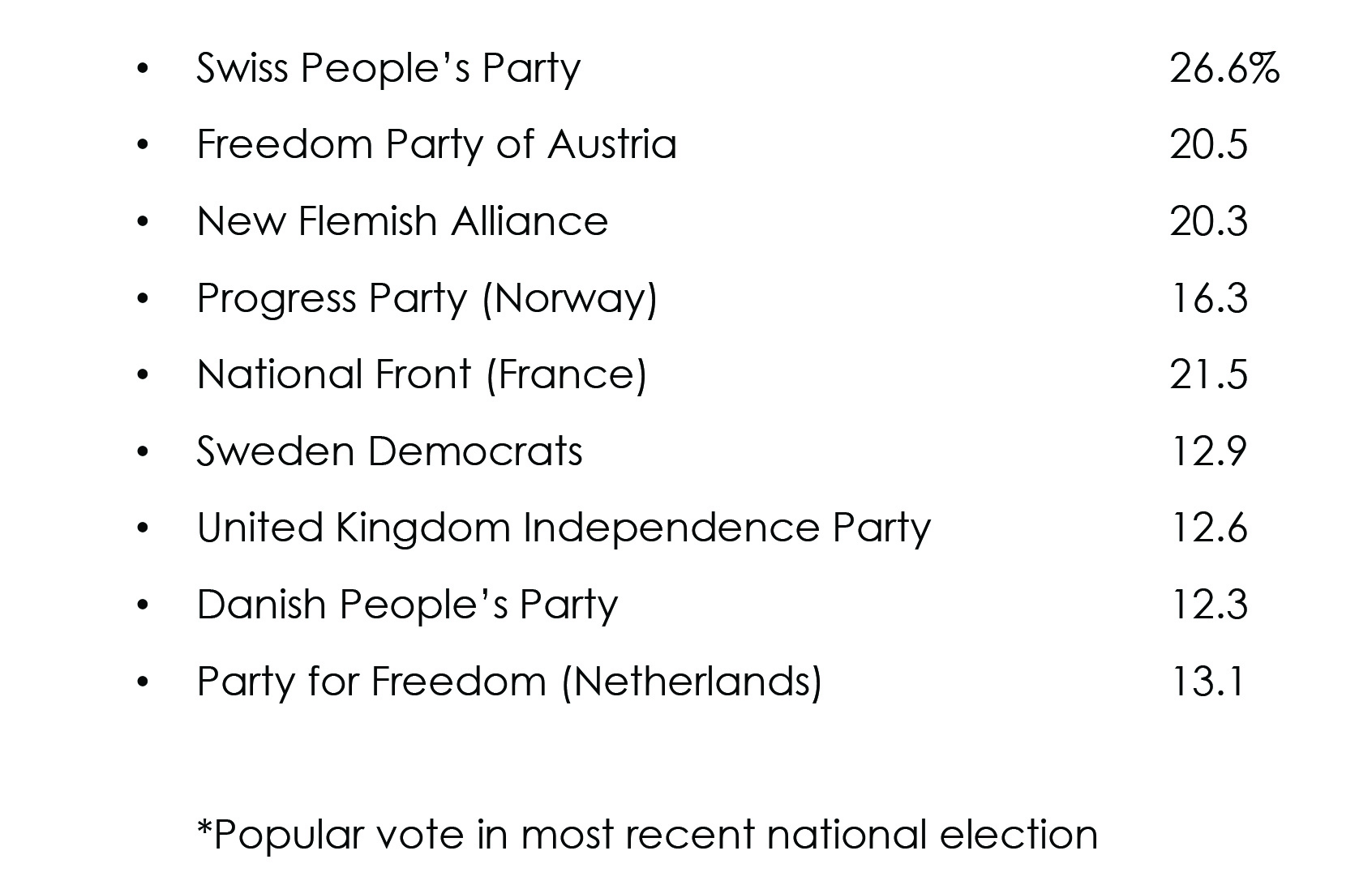
Figure 8. Growth in the Pressure System, 1981–201142









